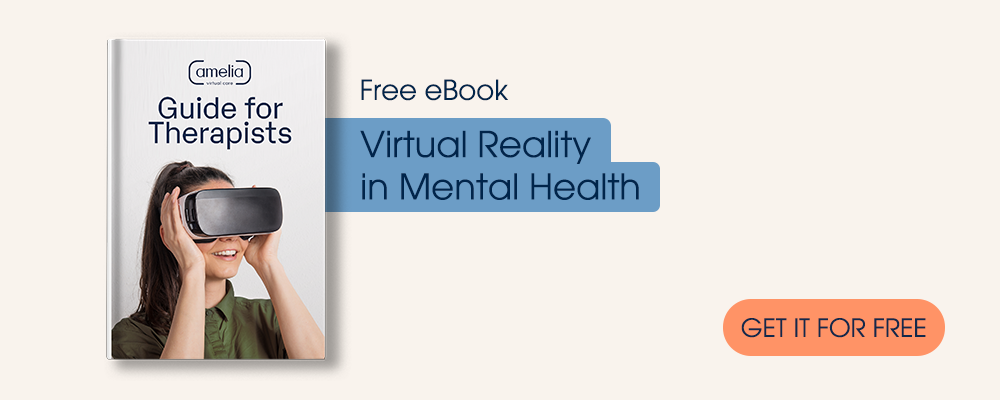Claustrophobia remains a well-known phobia among both academics and laypeople. The word often elicits an image of an individual ridden with anxiety and fear in or approaching a confined space or crowded area. Although claustrophobia will be functionally similar to agoraphobia, individuals with the former condition will be characterized with more limited avoidance. These same individuals will also experience certain bodily sensations that could be observed in those with panic disorder.
Claustrophobia is, indeed, unique within the classification group of specific phobias. For this reason, in today’s article, we will review some main facets of this phobia and delineate all current and up-and-coming treatment options available.
What is claustrophobia?
Claustrophobia is a condition that afflicts many people worldwide. Individuals with claustrophobia will often avoid confined spaces like elevators or public toilets and crowded areas. Interestingly, evading these places could exacerbate the fear.
When individuals experience claustrophobia, they may experience mild anxiety. In more severe cases, a panic attack may take place. The fear associated with claustrophobia is not of the confined area in and of itself, if rather, the impression that partial or complete loss of control can occur.
Individuals with claustrophobia will have often developed the condition due to a traumatic event during early childhood. Without appropriate treatment, this phobia could hinder individuals from carrying out regular, daily activities.
What causes claustrophobia?
As mentioned earlier, claustrophobia will oftentimes develop in individuals who experienced a traumatic event.
Examples of such events include:
- Trapped or held in a confined space
- Bullying or abuse
- Having a parent with claustrophobia
In cases wherein a patient’s parent experienced claustrophobia, condition onset in the individual may have resulted due to associations made between confined spaces, the parent’s anxiety and a sensation of helplessness to assuage that parent’s emotional state.
Can claustrophobia cause death?
No. Claustrophobia cannot cause death. However, patients with this condition may be prone to asking this question.
Claustrophobia can trigger symptoms similar to those found in panic attacks, including overwhelming anxiety, tachycardia and shortness of breath. While the individual afflicted by these physiological events can find it worrisome, such panic attacks cannot be a direct cause of death.
Is claustrophobia normal?
This doubt may serve as another example of a question posed by a patient.
First and foremost, it is important to underpin that the term “normal” in and of itself is a misnomer within the realm of mental health. Considering that normalcy finds its basis on the relativity of experiences, frequency and perceptions, it is recommendable to shift the patient’s focus on facts related to prevalence and treatment.
In the case of claustrophobia, it is a common condition that affects many people. In the United Kingdom, for example, an estimated 10% of the population will develop it at any one point in their lives.
Shifting the patient’s focus from “what is normal” to facts on prevalence and treatment could contribute to destigmatizing the mental health condition.
What treatments are available for claustrophobia?
Individuals with claustrophobia can seek different therapeutic options, such as:
- Exposure therapy
- Cognitive-behavioral therapy
- Relaxation and visualization
- Medications, including benzodiazepines or selective serotonin reuptake inhibitors
However, patients with claustrophobia can also consider breakthrough technology like virtual reality (VR) to help manage their condition. Current VR technology incorporates part of the aforementioned elements, and various studies have supported the efficacy of the digital tool in mental health care.
For example, a case study by Botella et al. on an intervention using VR in four subjects with claustrophobic fear alludes perfectly to the promise of the technology. Investigators observed a reduction in fear and avoidance in closed spaces, as well as increased self-efficacy in claustrophobic situations after the intervention. More interestingly, these subjects maintained the changes at the 3-month follow-up.
VR unlike some other therapeutic options boast advantages that include:
- Controlled environment and graded exposure setting
- Easy accessibility to the “feared” setting without leaving the consult office
- Possibility of minimizing residual fear through the promotion of self-efficacy in VR settings
For these reasons and more, if you are seeking an alternative, evidence-based therapy for your patients, take a look at Amelia’s virtual reality settings for claustrophobia. Psious’ VR technology helps patients work through the fear of closed spaces while affording mental health professionals control over elements such as repetition, the number of people, distance between walls and much more.
To learn more about Amelia Virtual Care and set up a free demo session, feel free to contact us! We would be glad to answer all of your questions and explore the many opportunities offered by our technology.
Other articles that might interest you:
- 5 things you should know about Prolonged Exposure Therapy
- How to manage Acrophobia: The Fear of Heights
- Virtual Reality on Preoperative Anxiety













